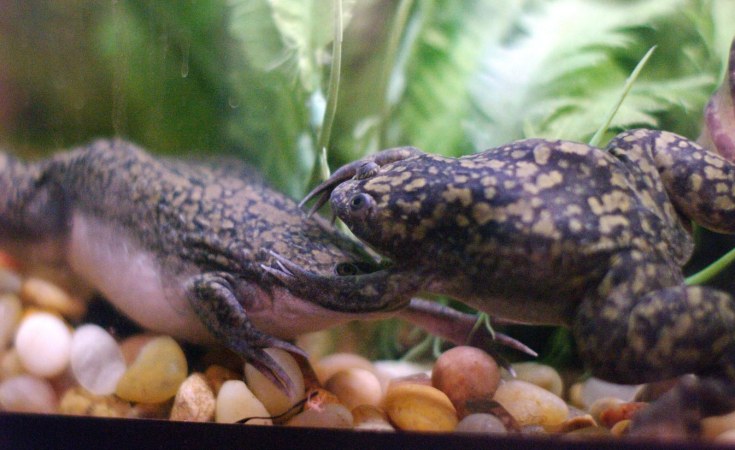Cape Town — It's raining frogs in South Africa. Well, almost. The biblical scenario unfolded in Overstrand Municipality where the Cape residents woke up to the croaking sounds of thousands of Platannas (African clawed frogs).
Swimming pools were filled with frogs and when people emerged from their homes in the coastal area, it was them jumping to avoid the amphibians this time.
Whale Coast Conservation's scientist and environmental educator, Sheraine van Wyk, confirmed that the frogs are Platannas, "because the hind feet are fully webbed and the front feet are small. They are amphibious and must stay in water".
What to do with the frogs?
Biodiversity conservation manager Tarron Dry also advised the residents in Hermanus, Gansbaai and Kleinmond to keep the Platannas in big buckets filled with water. "The buckets must be deep and have high sides in order for the frogs not to crawl out when volunteers carry them to the Vermont Salt Pan, where they will (most probably) be released," said Dry.
At least 1,000 rescued platannas were captured and then released into the Onrus River.
Liezl de Villiers, senior manager of the Overstrand Environmental Management Services (EMS) Department, thanked all the role players involved for assisting with the matter. De Villiers also thanked the young helpers and future herpetologists for their willingness to assist in catching and releasing the frogs.
Time was of the essence for these frogs because they needed to go back into the water before the sun came out; those out of the water when the sun started coming out of the clouds would likely die, according to the municipality. The municipality urged anyone that needed the frogs to be removed from their garden or swimming pool to phone the Environmental Management Section of Overstrand Municipality on 028 316 3724 / 028 313 5619 with your street address or visit their offices on the corner of Molteno and Viljoen Streets in Onrus.
According to Wikipedia, there are 18 different species of platannas in sub-Saharan Africa, also collectively known as African clawed frogs. The best-known species is the common plattanna (Xenopus laevis), which is often studied as a model organism. African clawed frogs are highly adaptable and will lay their eggs whenever conditions allow it. During wet rainy seasons, they will travel to other ponds or puddles of water to search for food. During times of drought, the clawed frogs can burrow themselves into the mud, becoming dormant for up to a year.


